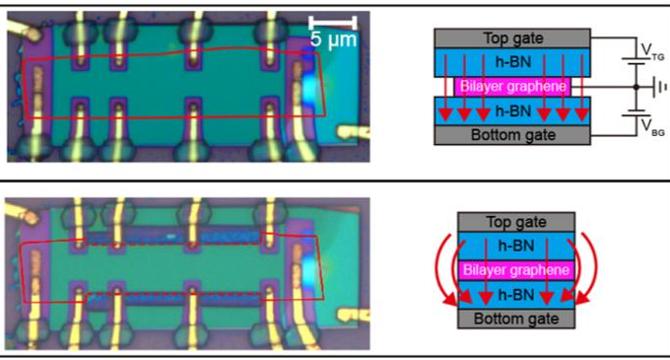Bioengineer
2w
108

Image Credit: Bioengineer
Discovery of Concealed Transport Pathways in Graphene Validates Potential for Next-Gen Device Innovation
- Researchers from POSTECH and NIMS conducted a study on bilayer graphene to understand its potential in revolutionizing future electronic devices.
- The study delves into nonlocal transport within bilayer graphene and how it challenges traditional electronic conduction.
- Bilayer graphene has a tunable electronic band gap, which allows for modulation via electric fields, making it an ideal material for innovative applications.
- Valleytronics is a new frontier in electronics that aims to exploit the valleys of charge carriers to facilitate faster and more efficient data processing.
- Nonlocal resistance has been deemed as clear evidence of the Valley Hall Effect within bilayer graphene, but its potential influence from external factors has raised concerns.
- The research team conducted a study to differentiate between pristine and altered graphene edges, and found that the etching process introduces unintended conductive pathways that distort the expected behavior of bilayer graphene.
- Their work encourages the scientific community to rethink current assumptions and methodologies when it comes to the impact of fabrication techniques on electrical properties and viability of emerging technologies.
- This research highlights a critical juncture in the understanding of nonlocal resistance and electron transport in bilayer graphene, and paves the way for crafting materials aligned with tomorrow’s sophisticated electronic needs.
- As demand for smarter and faster technology rises, innovations in materials science, particularly studies like this one on bilayer graphene, will be at the forefront to meeting future electronic challenges.
- The study was generously supported by esteemed organizations like the National Research Foundation of Korea and highlights the importance of collaborative research efforts.
Read Full Article
6 Likes
For uninterrupted reading, download the app